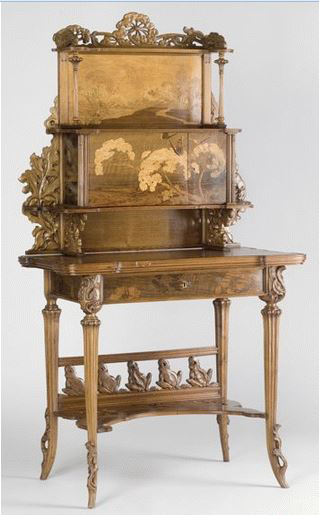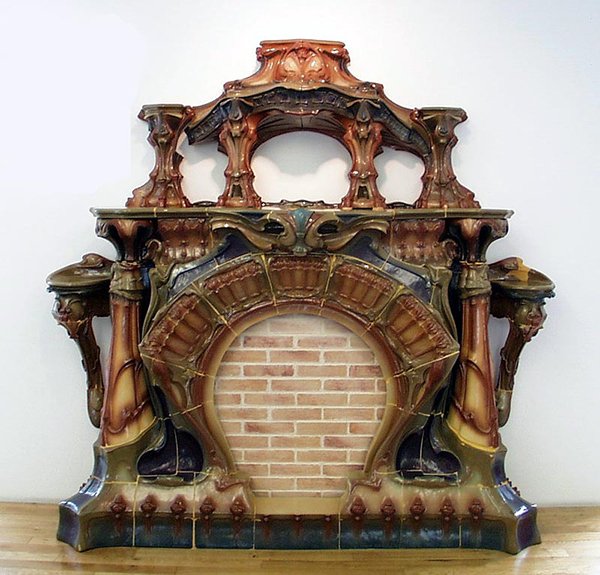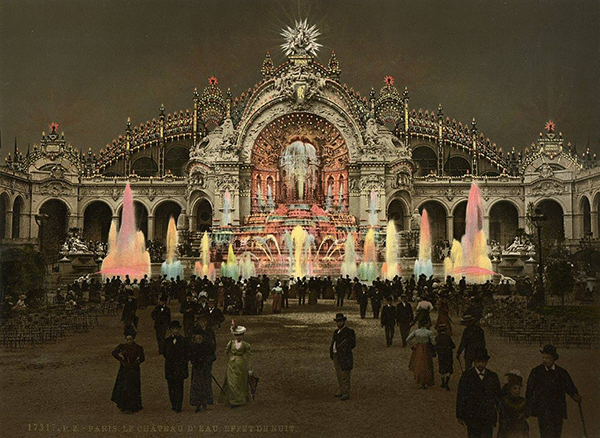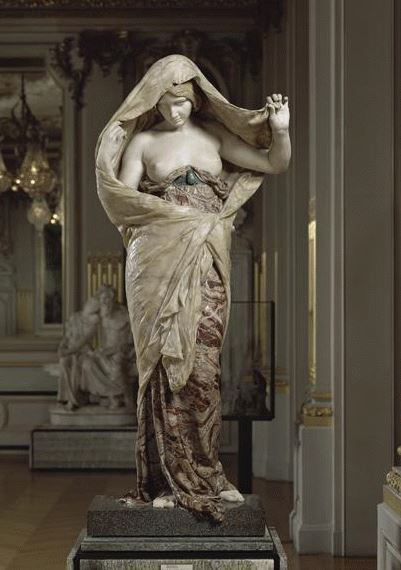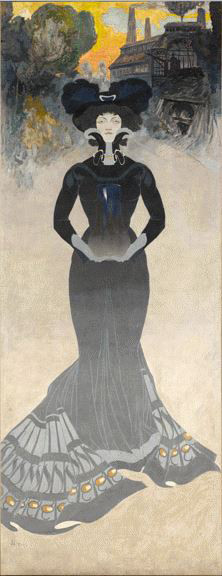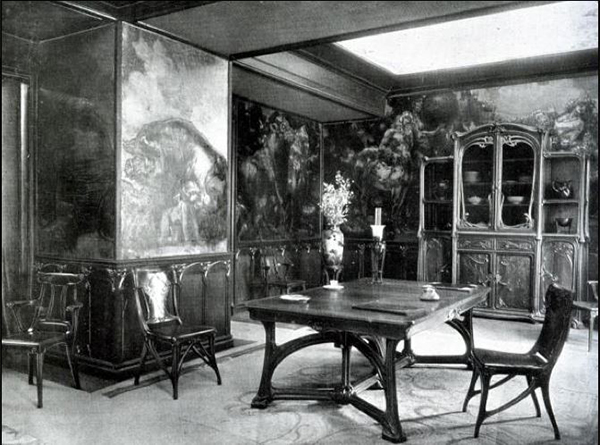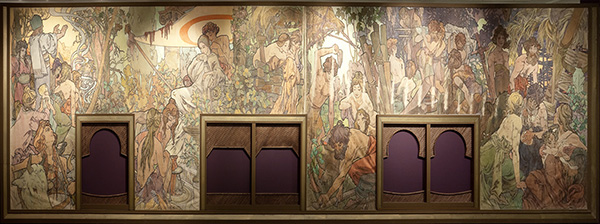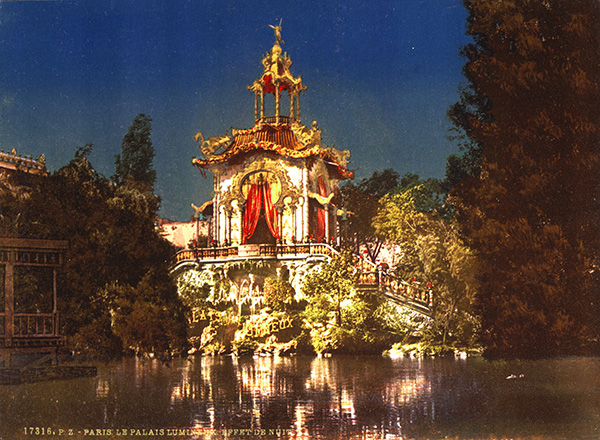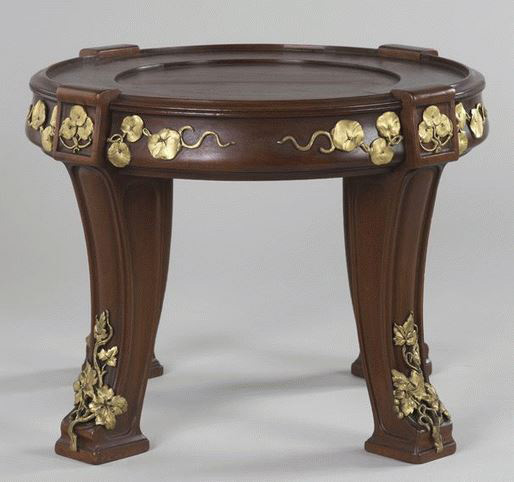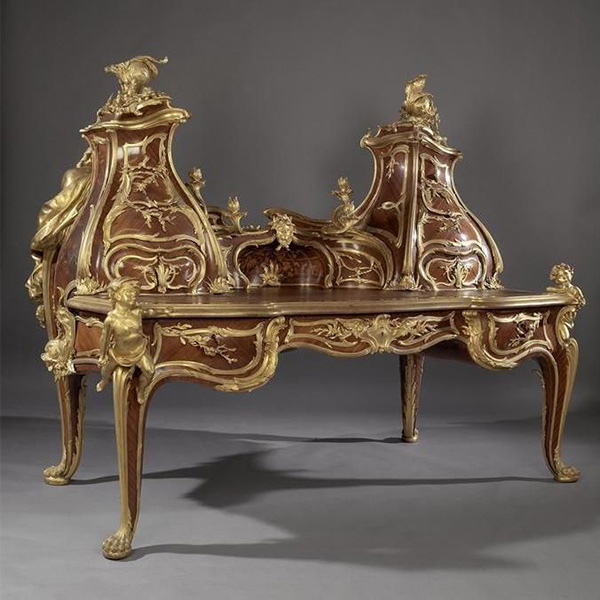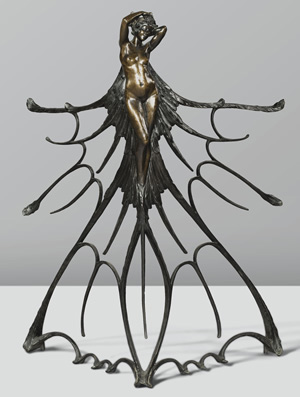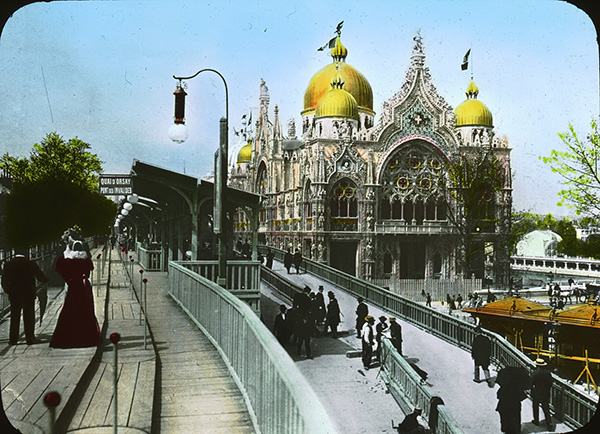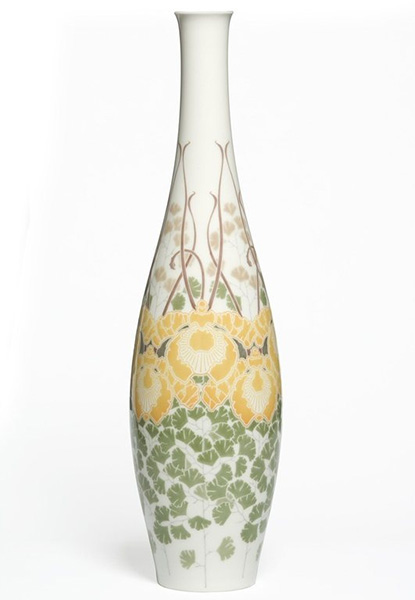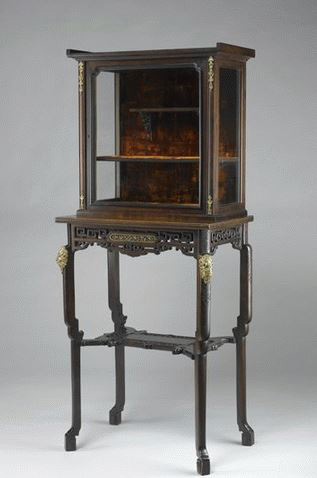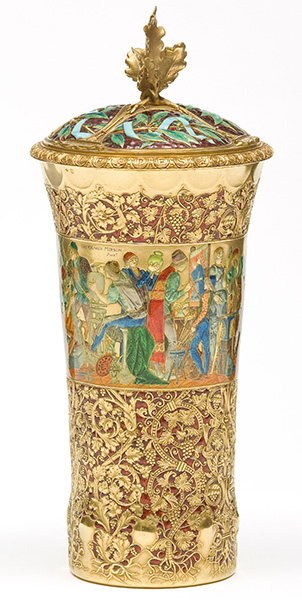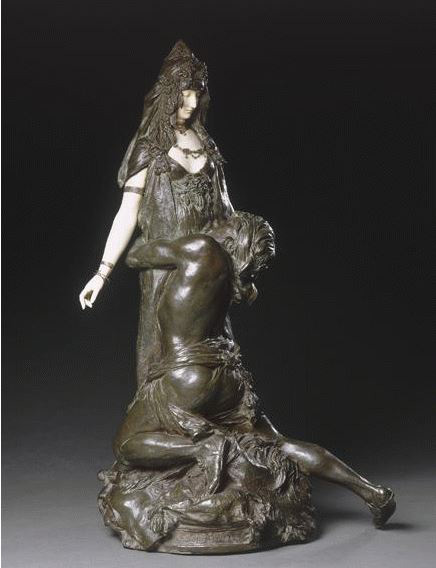World's Fair of 1900
Download PDFOrganized on the theme of the "assessment of a century", the World’s Fair of 1900 celebrates progress and the prospects of the future. It has remained iconic of the Paris of the Belle Époque, especially since Paris gained some masterpieces of its charm: the Grand Palais and the Petit Palais, which replace the Palais de l'Industrie in 1855, as well as the “Metropolitain” subway, inaugurated on July 14, 1900, the decoration of which is entrusted to Hector Guimard.
The Exhibition of 1900 is installed like the preceding ones on the Champs de Mars, but also extends along the Seine, and continues to the wood of Vincennes.
Artists redoubled refinements and innovations for this unique event. One example is Barrias’ sculpture, Nature unveiling in 1899, a work in polychromic marble and onyx from Algeria, Malachite and Lapis lazuli.
Art Nouveau triumphs, including the "Art Nouveau" pavilion by Siegfried Bing, decorated by De Feure. It exhibits interior decorations by Eugène Gaillard, Edward Colonna and Georges De Feure. Thus, in the field of furniture, Louis Majorelle acquires an international reputation, while Emile Gallé is consecrated by two great prizes and a gold medal. The Pérol Frères house also exhibits refine-lined designs. At François Linke’s stand, master of the Louis XV style and neo-rococo style, we also see extraordinary pieces, where the new style brings to a new dimension the fantasies of the eighteenth century.
In jewelry, the stand of René Lalique is noted for its large showcase. The pavilion of the history of Ceramics also features a magnificent Art Nouveau fireplace by the Sarreguemines factory, attributed to Victor Bury.
On the other hand, Art Nouveau style is officially adopted by the organizers. Indeed, if several entrances are planned for this immense exhibition, a monumental Art Nouveau style gate of 45 meters high is built by René Binet. Christofle and the Sèvres manufacture are also inspired by this new style, in previously unseen compositions, receiving a great prize.
In the section of furnishing bronzes, the passing of Ferdinand Barbedienne is regreted. However, his successor has there the opportunity to affirm the quality of his work for the house, now called Leblanc-Barbedienne. The jury particularly admires a monumental fireplace designed by Clovis-Viard.
Two other fireplaces are noted at this exhibition: that of Lapointe, made by H. Pain, with sculptures by Mathurin Moreau, and that of Bouhon frères, which also presents its collection of andirons and firescreens.
The 1900 World’s Fair hence intends to close the nineteenth century in beauty, and in joy, offering many attractions. At night, the monuments are illuminated like the water tower, the Bright Palace and the monumental gate.
Hot air balloon races are organized in the air, the Chicago Ferris wheel of the World’s Fair of 1893 is relocated to Paris, and many pavilions are dedicated to leisure: several theaters, an Upside-Down Manor, where one walks on the ceiling, and the Great Kaleidoscope.
Scientific progress is highlighted, notably the Lumière brothers' cinema, with projections on giant screens measuring 21 by 16 meters, with sound hand-synchronized by phonogram. The Cinéorama, an ancestor of virtual reality, simulates a journey by plane.
Another eloquent curiosity, a "moon dress", woven with glass thread to demonstrate the new technical prowess at the turn of the century, is made especially for the Exhibition by Larocque. There are only four in the world.
Finally, for the transport of visitors, the Decauville train is working, but also a mobile sidewalk, traveling on a viaduct seven meters from the ground.




